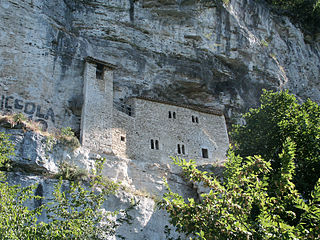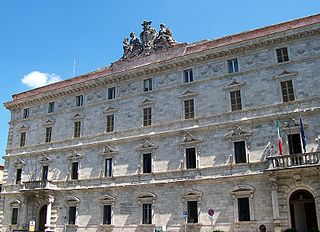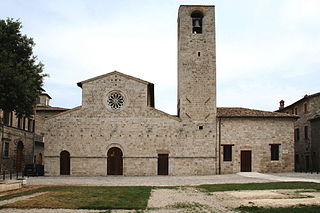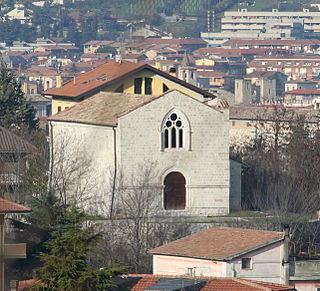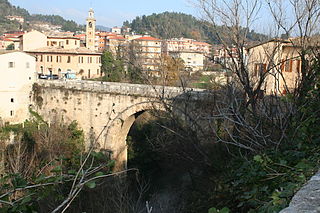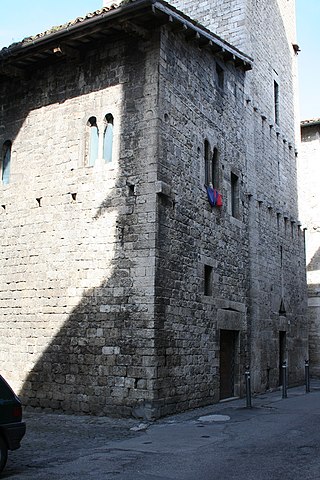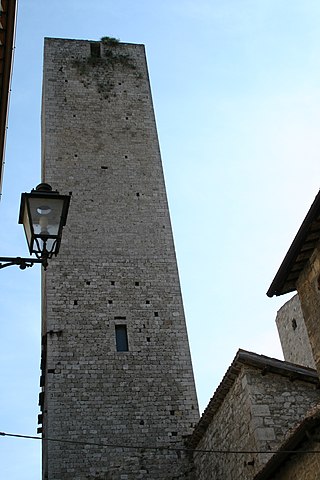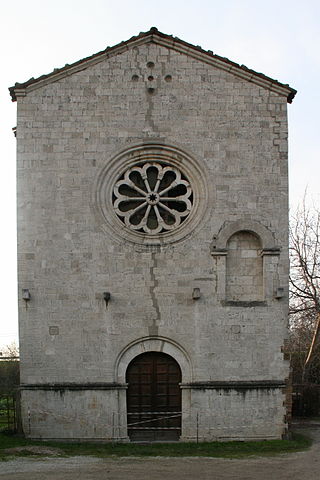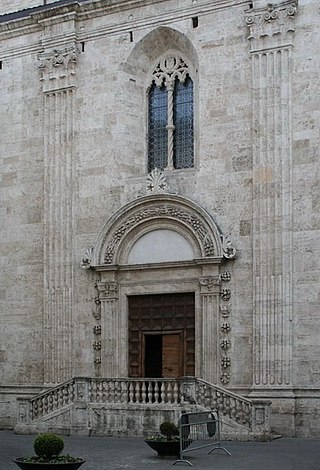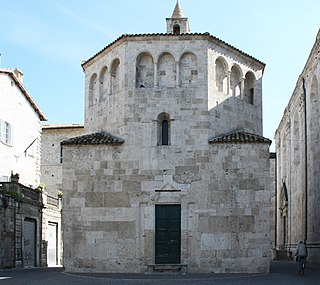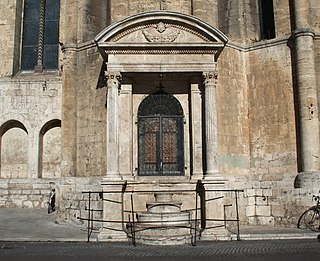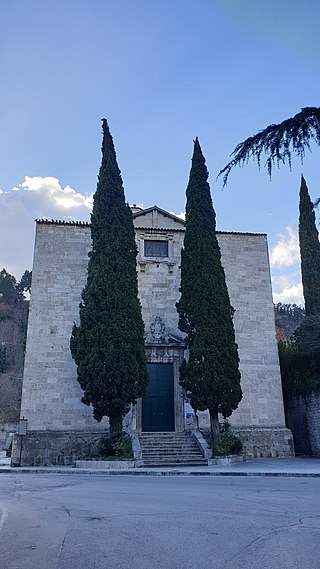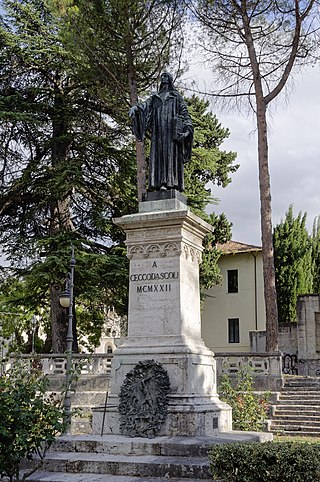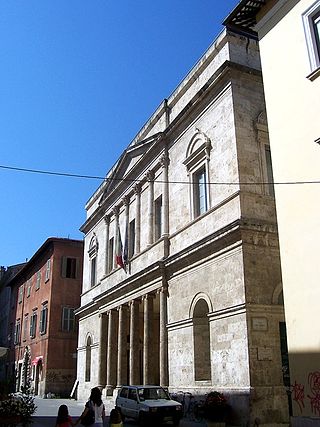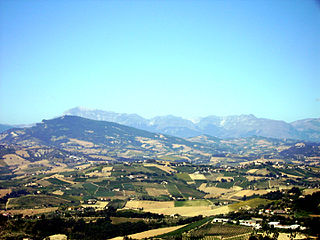22 Sights in Ascoli Piceno, Italy (with Map and Images)
Legend
Welcome to your journey through the most beautiful sights in Ascoli Piceno, Italy! Whether you want to discover the city's historical treasures or experience its modern highlights, you'll find everything your heart desires here. Be inspired by our selection and plan your unforgettable adventure in Ascoli Piceno. Dive into the diversity of this fascinating city and discover everything it has to offer.
Sightseeing Tours in Ascoli PicenoActivities in Ascoli Piceno1. Pinacoteca Civica
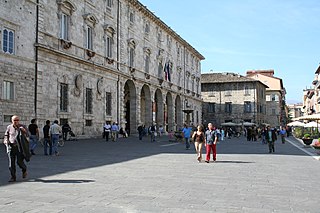
The Civic Art Gallery of Ascoli Piceno, considered one of the most important in the Marche region, and in central Italy, occupies the North (entirely) and West (partially) wings of the first and second floors of the Palazzo dell'Arengo in Piazza Arringo.
2. Forte Malatesta
The Malatesta Fort is a fortified urban defense work of the city of Ascoli Piceno. Built near the banks of the Castellano stream and the Cecco bridge, an obligatory step for those accessing the city from the east, it was rebuilt on the remains of previous architecture erected over the centuries.
3. Musei della Cartiera Papale
The Papal Paper Mill of Ascoli Piceno is an architectural complex made of sturdy regular square ashlars of travertine. The multifunctional vocation of the building has welcomed, over time, various work activities, such as: the paper mill, the water mills, the tanning of fabrics and the ironworks, all carried out with the inseparable and precious symbiosis of the driving force of the waters of the nearby Castellano stream.
4. Eremo di San Marco
The hermitage of San Marco is a hermitage located in the municipality of Ascoli Piceno, south of the city. The religious building, dedicated to St. Mark the Evangelist, owned by the municipality, inherited from the Sgariglia family, is clinging to the rocky wall of Colle San Marco, near the hamlet of Piagge. The building represents an important memory of art and spirituality for the city of Ascoli. Visible from Piazza del Popolo, it has watched over the Tronto Valley for many centuries, seeing the wide panorama that reaches the Adriatic Sea.
5. Museo Archeologico Statale di Ascoli Piceno
The State Archaeological Museum of Ascoli Piceno is housed inside Palazzo Panichi in Piazza Arringo. It was born with the function of the Museum of the Territory and in particular of the southernmost strip of the Ascoli area: the Tronto valley and the Tesino valley with an expansion up to the Salino valley, in the province of Teramo, which in the nineteenth century gravitated towards Ascoli.
Wikipedia: Museo archeologico statale di Ascoli Piceno (IT), Website
6. Palazzo del Governo
The Government Palace of Ascoli Piceno, also known as Palazzo San Filippo, is considered one of the largest buildings in the city. Its architecture occupies the entire east side of Piazza Fausto Simonetti and houses the headquarters of the Prefecture and the Provincial Administration. The name of Palazzo San Filippo is attributed to this building because a portion of it was a convent built in the seventeenth century, which belonged to the congregation of the Filippini.
7. Museo dell'Arte Ceramica
The Museum of Ceramic Art is located in Ascoli Piceno, in the evocative cloister of the former convent of the Romanesque church of San Tommaso overlooking the square of the same name. It was inaugurated on June 1, 2007.
8. Chiesa di San Salvatore di Sotto
The church of San Salvatore di Sotto built following the canons of the Romanesque style, currently deconsecrated, is located in the city of Ascoli Piceno. It is so named to distinguish it from the church of San Salvatore di Sopra which was built outside the city walls beyond Porta Romana.
9. Ponte Romano di Solestà
The Roman bridge of Solestà is a bridge in the Marche city of Ascoli Piceno. The construction dates back to the period of the Augustan age and boldly plunges into the recessed banks of the Tronto river.
10. Chiesa di San Gregorio Magno
The church of San Gregorio Magno, in Ascoli Piceno, was born as a transformation into a place of Christian worship of a pagan Roman temple, of greater dimensions, which was built between the late Republican Age, first century BC, and the early Augustan Age, first century AD in the area, behind the Palazzo dell'Arengo, where the Piazzetta di San Gregorio opens up, connecting the city plan to the Colle dell'Annunziata.
Wikipedia: Chiesa di San Gregorio Magno (Ascoli Piceno) (IT)
11. Palazzetto Longobardo
The Lombard Palace of Ascoli Piceno is a small medieval building of Romanesque art, used as a residence, which has no ties with the Lombard people. Its architectural composition constitutes a palatium-turris, the only perfectly preserved example of the city of the early communal age, which includes the palace and the adjacent tower of the Herculaneum.
12. Torre degli Ercolani
The tower of the Herculaneums rises in the city of Ascoli Piceno. Its architecture belongs to the medieval complex of Romanesque art which, together with the Lombard palace, constitutes the only example of a palatium-turris in the city that has survived intact to the present day.
13. Loggia dei Mercanti
The Loggia dei Mercanti is a sixteenth-century work that was leaning against part of the right side of the church of San Francesco, of which it covers about a third, between Corso Mazzini and Piazza del Popolo in Ascoli Piceno. The edge of the western front is located almost exactly at the intersection of the two main road axes of the Roman city.
14. Chiesa di Santa Maria delle Donne
The church of Santa Maria delle Donne in Ascoli Piceno was built at the beginning of the thirteenth century on the plain of San Panfilo, outside the city walls, just beyond Porta Romana, in the district of the same name.
15. Statua del Cristo Redentore
The statue of Christ the Redeemer, or the Sacred Heart of Jesus, is a work built with travertine blocks and is located on the hill of the Sacred Heart, a modest hill located in Ascoli Piceno, in the northern part. It is 12 meters high in total.
16. Porta della Musa
On the left side of the Cathedral of Sant'Emidio there is the side entrance of the cathedral of Ascoli Piceno called La Porta della Musa. Poetic denomination that derives from the inscription of the couplet, in Latin, which can be read in the block of travertine walled up near the door:
17. Battistero di San Giovanni
The Ascoli Piceno Baptistery, also known as the baptistery of Saint John, is a religious building found on the eastern end of the piazza Arringo at the center of Ascoli Piceno and sitting next to and just north of the cathedral dedicated to St. Emygdius, the city's patron saint.
18. Edicola di Lazzaro Morelli
The aedicule of Lazzaro Morelli, of classicist taste, is located in Ascoli Piceno in Piazza del Popolo adhering to an apse of the external wall of the church of San Francesco. It was built in 1639 and dedicated to the Madonna of Reggio at the behest of the client, the governor pro tempore mons. Gerolamo of the Codebò counts of Modena.
19. Chiesa del Santissimo Crocifisso dell'Icona
The church of the Holy Crucifix of the Icon, also called the church of Santa Maria delle Grazie, is a Catholic place of worship, located in Piazza Cecco d'Ascoli in the western area of the historic center of Ascoli Piceno, between the Roman Theater and the medieval walls with Porta Romana.
20. Monumento a Cecco d'Ascoli
The monument to Cecco d'Ascoli is a work dedicated to Cecco d'Ascoli born Francesco Stabili, an illustrious figure of poet, doctor, teacher, philosopher and astrologer / astronomer, located in Ascoli Piceno in Piazza Giacomo Matteotti.
21. Teatro Ventidio Basso
The Ventidio Basso Theater is the communal theater, concert hall, and opera house in the city of Ascoli Piceno region of Marche, Italy. It is located on via del Trivio, in front main cloister of the church of San Francesco, near piazza del Popolo. The exterior was erected in neoclassical-style, with grand interiors.
22. Monte dell'Ascensione
Mount Ascensione is a 1,110 m high elevation in the Marche sub-Apennines, located entirely in the province of Ascoli Piceno. It straddles the valleys of Tronto and Tesino, a river that originates just north near Force. The profile of Ascensione has a jagged appearance that suggests different figures: depending on the vantage point, it may resemble the Sleeping Beauty or the profile of Cecco d'Ascoli, a heretic and opponent of Dante Alighieri. The views from the east northeast and from the west southwest are perfectly symmetrical.
Share
How likely are you to recommend us?
Disclaimer Please be aware of your surroundings and do not enter private property. We are not liable for any damages that occur during the tours.


